Complicated Power struggle in the Middle East : A review
POWER STRUGGLE IN MIDDLE EAST COUNTRIES
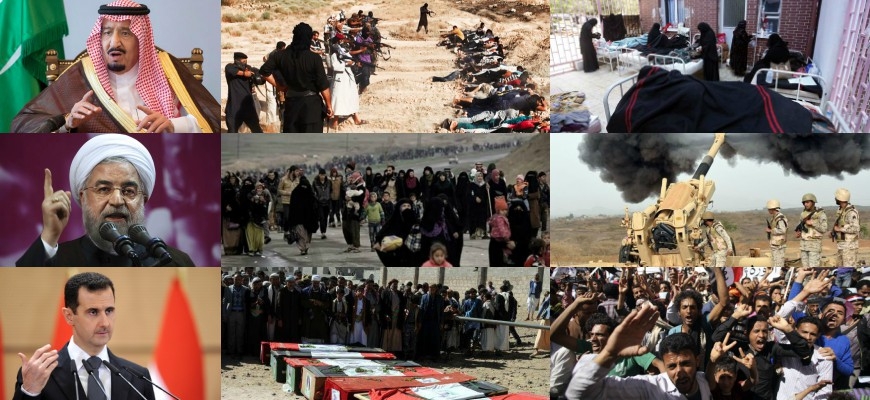
Middle East Region consists of 16 countries including Bahrain, Cyprus, Egypt, Iran, Iraq, Israel, Jordan, Kuwait, Lebanon, Oman, Qatar, Saudi Arabia, Syria, Turkey, United Arab Emirates, Yemen with the total estimated population of 414,569,760.
The struggle is everywhere. All the living beings have to struggle for their life, for food etc. But when it comes to earning more power, then the definition of struggle is totally changed. Middle East Countries are rich in culture, heritage and mainly in natural resources. It also has a bright history but when we look back in a decade or so we find only darkness. We find only struggle- a power struggle. Many Arab countries have to gain full control in the region to earn more and more profit through natural resources.
As the profit is concerned, the ways of doing business are dark. These Arab countries spread bloodshed in other small regions, play dirty politics, spread terrorism, create civil war and try to destabilize. However, all this is done to only earn a profit and personal interest. But in this game of earning more and more power, civilians are the only one who is killed, injured and most affected one.
There are several factors that are playing a vital role in the destabilization of Middle East region including terrorism, dictatorship, civil war, the struggle between Iran and Saudi Arabia, religious conflicts, the role of western countries for personal interest etc.
Terrorism is the worst phenomena which have affected the Middle East most. Every now and then, one or another country witnesses acts of terrorism including bomb blasts, firing, kidnapping etc. Though the powerful countries in the Middle East are committed to western countries including US, Russia, UK to eradicate terrorist groups and terrorism from the region but still have not got rid of it. Dictatorship and religious conflicts are also amongst the most common factors which have escalated tensions in the Middle East region.
Let’s Understand the demography of the various Middle East Countries
Bahrain: Bahrain - which name means "two seas" - was one of the first states in the Gulf to discover oil and to build a refinery. It never reached the levels of production enjoyed by Kuwait or Saudi Arabia, however, and has been forced to diversify its economy.
The Muslim country is ruled by a Sunni king, whose family holds the main political and military posts. The divide between the Shia majority and the Sunni population has led to long-running tension in the kingdom, which has sporadically boiled over into civil disobedience.
The government called in the Saudi military to crush protests by demonstrators demanding a greater say in government in early 2011. The Shias claim there is systematic discrimination against them in jobs and services. Over the years, however, the country enjoyed the increasing freedom of expression, and monitors said the human rights situation had improved.
Cyprus: By legend, the birthplace of the ancient Greek goddess of love Aphrodite, Cyprus's modern history has, in contrast, been dominated by enmity between its Greek and Turkish inhabitants. Cyprus has been divided since 1974 when Turkey invaded the north in response to a military coup on the island which was backed by the Athens government.
The island was effectively partitioned with the northern third inhabited by Turkish Cypriots and the southern two-thirds by Greek Cypriots. United Nations troops patrol the "Green Line" dividing the two parts. Reunification talks have proceeded slowly.
Cyprus successfully diversified its largely agrarian economy into one based on services - including a large tourism sector - and light manufacturing. More recently it has also developed into an important financial hub, especially for investors from Russia and Eastern Europe.
Egypt: Long known for its pyramids and ancient civilization, Egypt is the largest Arab country and has played a central role in Middle Eastern politics in modern times. In the 1950s President Gamal Abdul Nasser pioneered Arab nationalism and the non-aligned movement, while his successor Anwar Sadat made peace with Israel and turned back to the West.
Egypt's teeming cities - and almost all agricultural activity - are concentrated along the banks of the Nile, and on the river's delta. Deserts occupy most of the country. The economy depends heavily on agriculture, tourism and cash remittances from Egyptians working abroad, mainly in Saudi Arabia and the Gulf countries.
However, rapid population growth and the limited amount of arable land are straining the country's resources and economy, and political unrest has often paralyzed government efforts to address the problems.
Iran: Iran became an Islamic republic in 1979 when the monarchy was overthrown and clerics assumed political control under supreme leader Ayatollah Khomeini. The Iranian revolution put an end to the rule of the Shah, who had alienated powerful religious, political and popular forces with a programme of modernization and Westernization coupled with heavy repression of dissent.
Persia, as Iran was known before 1935, was one of the greatest empires of the ancient world, and the country has long maintained a distinct cultural identity within the Islamic world by retaining its own language and adhering to the Shia interpretation of Islam.
Iraq: Iraq, which occupies an area once home to some of the earliest known civilizations, became a battleground for competing forces after the US-led ouster of President Saddam Hussein in 2003. The mainly Shia-led governments that have held power since then have struggled to maintain order, and the country has enjoyed only brief periods of respite from high levels of sectarian violence. Instability and sabotage have hindered efforts to rebuild an economy shattered by decades of conflict and sanctions, even though Iraq has the world's second largest reserves of crude oil.
Israel: A densely-populated country on the eastern shore of the Mediterranean Sea, Israel is the only state in the world with a majority Jewish population. It has been locked in conflict with the Palestinians and its Arab neighbours over ownership of land considered holy by many Jews, Christians and Muslims since its creation in 1948.
Jordan: The Hashemite Kingdom of Jordan is a small country with few natural resources, but it has played a pivotal role in the struggle for power in the Middle East. Jordan's significance results partly from its strategic location at the crossroads of what Christians, Jews and Muslims call the Holy Land.
It is a key ally of the US and, together with Egypt, one of only two Arab nations to have made peace with Israel. The desert kingdom emerged out of the post-First World War division of the Middle East by Britain and France.
Kuwait: Oil-rich Kuwait is a tiny country nestling at the top of the Gulf. Flanked by powerful neighbours Saudi Arabia, Iraq and Iran, its strategic location and massive oil reserves make it one of the world's richest countries per capita.
A conservative state with a Sunni Muslim majority and a US ally, Kuwait stands out from the other Gulf monarchies for having the most open political system. But tensions have persisted between parliament and the cabinet, controlled by the ruling Al-Sabah family, and the government is facing increasing calls for radical political reform from the opposition.
Lebanon: With its high literacy rate and traditional mercantile culture, Lebanon has traditionally been an important commercial hub for the Middle East. It has also often been at the centre of Middle Eastern conflicts, despite its small size, because of its borders with Syria and Israel and its uniquely complex communal make-up. Shia Muslims, Sunni Muslims, Christians and Druze are the main population groups in a country that has been a refuge for the region's minorities for centuries.
Oman: The oldest independent state in the Arab world, Oman is one of the more traditional countries in the Gulf region and was, until the 1970s, one of the most isolated. It is strategically placed at the mouth of the Gulf at the south-east corner of the Arabian Peninsula and, in the 19th century, vied with Portugal and Britain for influence in the Gulf and the Indian Ocean.
The country has so far been spared the militant Islamist violence that has plagued some of its neighbours. Oman has not been immune from the groundswell of political dissent in the region, however. Protests in 2011 demanding reforms were dispersed by riot police, and the government began a crackdown on internet criticism the following year.
Qatar: Qatar, once one of the poorest Gulf states, is one of the richest countries in the region today. Qatar is using income from its large gas reserves to bankroll its regional and global ambitions. It has won a controversial bid to host the 2022 Football World Cup.
Not all of its regional interventions are popular with other Arab leaders, like its support for the Palestinian Hamas faction in Gaza and Islamist groups in Egypt and Syria. In 2017 Saudi Arabia led efforts to cut the country off to force it to abandon its alleged support for terrorism.
It also faces some problems at home. Oil money funds an all-embracing welfare state, with many services free or heavily subsidized, but the treatment of migrant workers is frequently criticized by rights groups.
Saudi Arabia: The Kingdom of Saudi Arabia is one of the main players in the Arab world. Its stature is built on its geographical size (twice that of France and Germany combined), its prestige as the custodian of the birthplace of Islam and its colossus status as an oil producer - with a quarter of the world's proven reserves under its deserts.
Its importance as an oil exporting nation has made economic interdependence with the West - where the main consumer demand is found - a necessity. This, in turn, has led to strong political and military relationships that at times have been a source of awkwardness for both sides. It stands out for its espousal of a puritan version of Sunni Islam, including harsh punishments such as public beheadings, and its restrictions on women.
Syria: Once the centre of the Islamic Caliphate, Syria covers an area that has seen invasions and occupations over the ages, from Romans and Mongols to Crusaders and Turks. A country of fertile plains, high mountains and deserts, it is home to diverse ethnic and religious groups, including Kurds, Armenians, Assyrians, Christians, Druze, Alawite Shia and Arab Sunnis, the last of whom make up a majority of the Muslim population.
Modern Syria gained its independence from France in 1946 but has lived through periods of political instability driven by the conflicting interests of these various groups. Since 2011 political power, long held by a small mainly Alawite elite, has been contested in a bitter civil conflict initially sparked by the Arab Spring that turned into a complex war involving regional and international powers.
Turkey: Once the centre of the Ottoman Empire, the modern secular republic was established in the 1920s by nationalist leader Kemal Ataturk. Straddling the continents of Europe and Asia, Turkey's strategically important location has given it major influence in the region - and control over the entrance to the Black Sea.
Progress towards democracy and a market economy was halting after Ataturk's death in 1938, and the army - seeing itself as guarantor of the constitution - repeatedly ousted governments seen as challenging secular values. Joining the European Union has been a longstanding ambition. Membership talks were launched in 2005, but have stalled over serious misgivings about Turkey's human rights record.
Kurds make up about a fifth of the population. Kurdish separatists who accuse the Turkish state of seeking to destroy their cultural identity have been waging a guerrilla war since the 1980s.
United Arab Emirates: The United Arab Emirates (UAE) is a federation of seven states that has grown from a quiet backwater to one of the Middle East's most important economic centres. Though traditionally conservative, the UAE is one of the most liberal countries in the Gulf, with other cultures and beliefs generally tolerated. Politically it remains authoritarian, however.
Relations with neighbouring Iran have been tense because of an ongoing territorial dispute over Gulf islands. The UAE was one of only three countries to recognize Taliban rule in Afghanistan. Before oil was discovered in the 1950s the UAE's economy was dependent on fishing and a declining pearl industry. But since oil exports began in 1962, the country's society and economy have been transformed. The UAE has diversified and has become a regional trading and tourism hub. UAE firms have invested heavily abroad.
Yemen: Despite its ancient roots as the crossroads of Africa, the Middle East and Asia, the modern Republic of Yemen is a relatively new state. It was created after communist South Yemen and traditional North Yemen merged in 1990, following years of strife.
Tensions remain between the north and the south, however. A southern separatist movement was defeated in a short civil war in 1994, and tensions re-emerged in 2009 when government troops and rebels, known as the Houthi, clashed in the north, killing hundreds and displacing more than a quarter of a million people.
A fresh wave of protests in 2011, inspired by the Arab Spring uprisings in Tunisia and Egypt, forced then-President Ali Abdallah Saleh to resign. Yemen has also become a base for militant groups, like Al-Qaeda and Islamic State, adding to instability in the country. The country spiraled into civil war in 2014 and, despite peace initiatives, fighting continues.
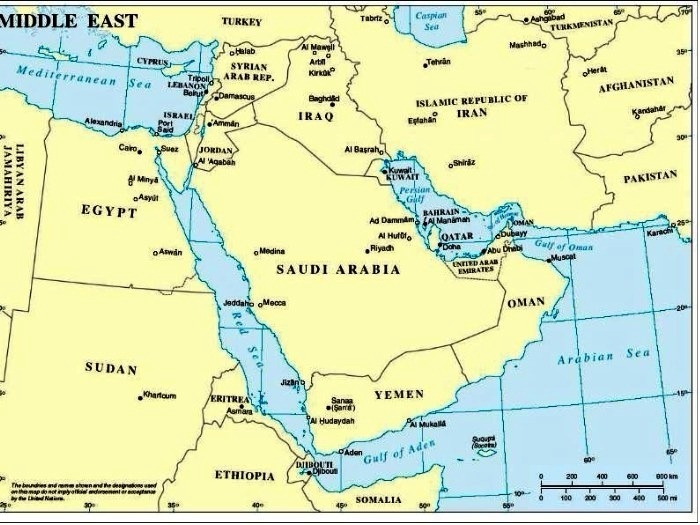
Terrorism in the Middle East
Middle East Countries is the most affected regions due to terrorism. There are many groups including ISIS, Hezbollah, Taliban etc which are responsible for creating instability in these Middle East countries. The present Middle East is full of dictators, violent, absolute monarchies, who support their agendas even if violence is needed. The biggest benefactor of Islamic terror groups around the world is Saudi Arabia.
Taliban and Al-Qaeda: When the Soviet Union invaded Afghanistan, The USA and its allies started supporting 'mujahideen' i.e. freedom fighters, who were mostly radicalized students from 'madrasas' gathered together by ISI, armed by the west, to fight against USSR. Only a few countries like India and Iran supported the Northern Bloc in Afghanistan which although was also against USSR's invasion of their country but was not as radical as the southern ones (from near the Pakistan border).
ISIS: They originated during the Syrian unrest. Well, during the Arab spring, the Syrian people too came out to protest against their government, to speak out against corruption and the economic policies. The government responded a bit late, but the Gulf monarchies came to action a lot quicker.
Syria being the weakest link in the resistance chain, got its protests hijacked by foreign mercenaries. The resistance chain which comprises of Hezbollah in Lebanon, Iraqi government and allied groups, and Iran, speak out against the Israeli policies and had previously openly asked for the Egyptians to protest against their dictator: Hosni Mubarak (the one who had signed a peace treaty with Israel, thereby completely blocking Gaza and Palestinians). When Hezbollah won the battle against Israel in 'July 2006 Lebanon war' and then the Egyptians spoke out against their dictator, conditions were set in stone that Israel will support any unrest in neighbouring Syria to keep its enemies busy and to weaken them.
Hence, the peaceful protest in Syria was high-jacked, and foreign extremists from over 70 countries slowly started arriving in Syria.
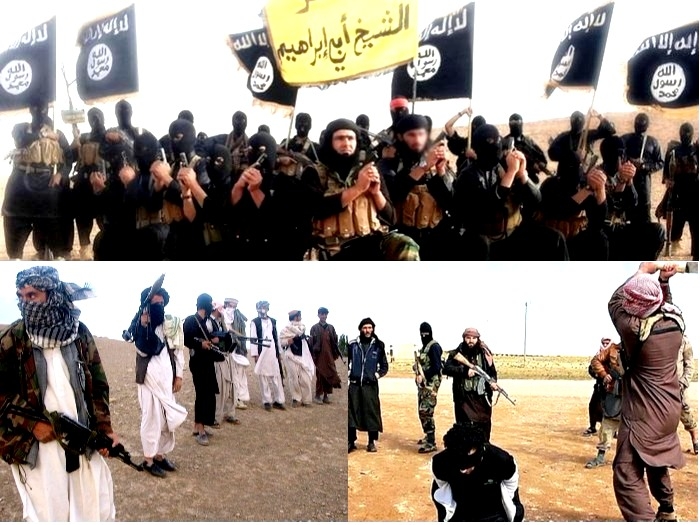
ISIS battling for Power in the Middle East but no one concerned
The terrorist group Islamic State of Iraq and Syria (ISIS) has taken over several Iraqi cities, including Mosul, the country’s second most important city, and has been moving toward Baghdad, Iraq’s capital. Unfortunately, most people pay little attention to the root causes of terrorism in the Middle East. To understand why ISIS has been able to accomplish what it has, many factors must be taken into consideration.
Note: There are many other small terrorist groups which spread bloodshed in Middle East countries but work in the shadow of bigger organizations including ISIS, Taliban, Al-Qaeda etc.
Terrorist attacks in Middle East countries
Egypt: The downing of a Metrojet plane soon after taking off from Sharm el Sheikh airport in October 2015 highlighted the political instability in Egypt, which continues to have grave economic consequences for the country’s economy. The incident was claimed by the local affiliate of Islamic State and killed 224 passengers and crew. Overall, 100 people lost their lives and 900 were injured in 493 separate terrorist incidents in Egypt till now.
Yemen: Till now, nearly 3000 killed and 7000 injured in over 500 terrorist attacks. The country is beset by a civil war which has seen Houthi rebels and allies of former president Ali Abdullah Saleh take on a Saudi-led coalition of Arab states. Atrocities have been committed by both sides, with numerous allegations of human rights abuses by the Saudi forces. In terms of terrorist attacks, the most active groups are Houthi extremists, followed by the local affiliates of Islamic State and Al Qaeda.
Syria: The most lethal conflagration in the Middle East continues to cause huge suffering and loss of life, with more than 400,000 deaths to date. Much of the carnage is due to the actions of President Bashar Al-Assad’s forces and his Russian and Iranian allies – but these are not counted in the terrorism figures as they are state actors. Excluding them, there were 384 terrorist incidents last year, causing 2,761 deaths and 2,830 injuries. That was a 63% increase in the death toll compared with the year before.
Iraq: There were 2,415 terrorist incidents in Iraq last year, causing 6,960 deaths and 11,900 injuries. The death toll was actually 30% lower than in 2014, but it still means that Iraq suffered more from terrorism than any other country. More than 40 different groups have launched terrorist attacks in Iraq since the US-led invasion in 2003, but two of them have proved particularly deadly, Islamic State and Al Qaeda. To date, Islamic State forces have been responsible for at least 11,000 deaths, although the actual figure may be far higher – around two-thirds of the 50,538 deaths caused by terrorism since 2000 have gone unclaimed.
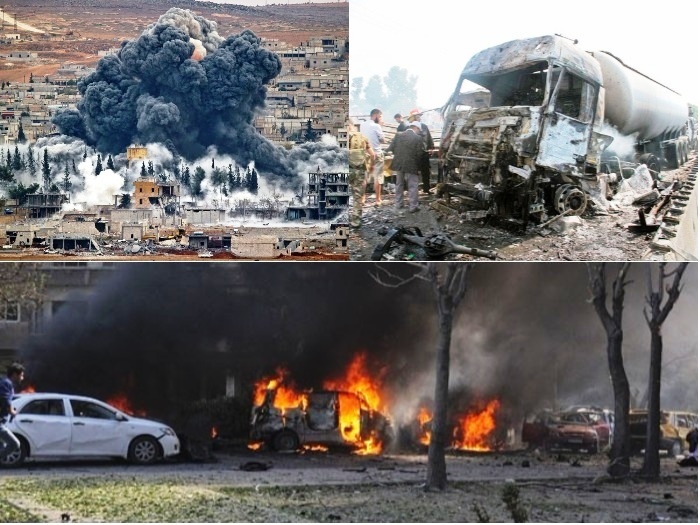
Role of Big Middle East Countries against Terrorism
Saudi Arabia: Regional Sunni power Saudi Arabia is part of the US-led military action against IS targets in Syria. Riyadh also agreed to a US request to provide a base to train moderate Syrian rebel forces. The kingdom has been a key supporter of the rebels, including hardline Islamist groups, but it has rejected an Iranian accusation that it has directly supported IS.
However, wealthy Saudis have sent donations to the group and some 2,500 Saudi men have traveled to Syria to fight. The Saudi authorities are concerned that IS will inspire Saudi jihadists to challenge the monarchy's legitimacy and seek to overthrow it.
In July 2014, Riyadh deployed 30,000 troops to beef up security along its border with Iraq, and the following month hosted Iran's deputy foreign minister as the two regional rivals agreed to co-operate.
Jordan: Jordan, a staunch US ally, said it had joined the US and several Gulf Arab states in carrying out air strikes on IS militants in Syria in September 2014 to "ensure the stability and security" of its borders.
A government spokesman said it took action in order to "pre-empt danger before it arrived in our country", and that he believed the Jordanian public would understand the need to forestall the jihadist group before it became active in Jordan.
IS has threatened to "break down" Jordan's borders and the group enjoys the support of a growing number of people in the kingdom, some of whom staged demonstrations in the southern town of Maan in June 2014. More than 2,000 Jordanian citizens are believed to have traveled to Syria to fight in the past three years.
Before launching the air strikes on IS, the Jordanian military had doubled its military presence along the border with Iraq. The killing of Jordanian pilot Moaz al-Kasasbeh, captured by IS in December 2014, appears to have strengthened the government's resolve to take on the militants, with King Abdullah II saying his death would not be in vain and promising a "severe response".
Iran: Regional Shia power Iran has seen IS - which regards Shia Muslims as heretics who should be killed - advance to within 25 miles (40km) of its border. Although Iran stands on the opposite side of much of the international community over Syria, it has called for co-operation against IS. It has reached out to its rival Saudi Arabia - the leading Sunni power - and turned a blind eye to US actions in Iraq, which it has historically opposed.
Officially Iran denies it has deployed any combat troops in Syria, but in June 2015, the official Irna news agency said at least 400 Iranian and Iran-based Afghan "volunteers" had been killed in the past four years. In Iraq, the Iranians have played a key role in countering IS. Revolutionary Guards have advised Iraqi security forces, Iranian pilots have carried out air strikes, and Iranian-backed Shia militia has been mobilized.
Iraq: The former Shia-dominated government of Nouri Maliki marginalized Iraq's Sunni community, creating conditions which helped the extremist Sunni comes to prominence. When IS overran the northern city of Mosul in June 2014 before moving southwards, Maliki requested US air strikes. However, US President Barack Obama said further military assistance was dependent on an inclusive government is formed.
He nevertheless launched air strikes in August 2014 when thousands of members of the Yazidi religious minority became trapped on Mount Sinjar. In September 2014, Maliki stepped aside and a new Iraqi government was named. The next phase of US assistance will reportedly involve an intensified effort to train, advise and equip the Iraqi military, Kurdish Peshmerga fighters and Sunni tribesmen willing to turn against IS.
It is not clear how new Prime Minister Haider al-Abadi will deal with the Shia militiamen who have stopped IS reaching Baghdad. Some have been accused of operating outside of the state's control and carrying out reprisal attacks against Sunnis.
Syria: Since the start of the uprising against his rule in March 2011, President Bashar al-Assad has repeatedly warned of the threat of Islamist extremists to Syria and the wider region. Western powers initially dismissed Assad's portrayal of his opponents as "terrorists", but became increasingly concerned by the rise of IS and al-Qaeda's affiliate, al-Nusra Front.
Although they now acknowledge that IS cannot be beaten without attacking its strongholds in Syria, Western powers still want Assad out of power and are reluctant to co-operate with him. The Syrian foreign ministry said it was given advance warning of the US-led air strikes on IS targets on its territory in September 2014, stating it supported international efforts at "combating terrorism"
United Arab Emirates: The UAE was reported to have offered its air force to attack IS positions in Iraq before it participated in the military action in Syria in September 2014. It is vehemently opposed to Islamist groups in the region and is believed to have launched air strikes on Islamist-allied militia in Libya from bases in Egypt in August 2014. However, US officials have told the BBC that the UAE suspended its involvement in the strikes after the Jordanian pilot was captured.
Qatar: Qatar was another Gulf state to participate in or support the US-led military action against IS in Syria. The emirate is the location of Al Udeid Air Base, a highly-classified US facility from which all attack and surveillance missions in the region are coordinated by US Central Command (CentCom).
The Qatari government has been forced to repeatedly deny accusations from Iraq's Shia leaders that it provided financial support to IS. However, wealthy individuals in the emirate are believed to have made donations and the government has given money and weapons to hardline Islamist groups in Syria. Doha is also believed to have links to the al-Nusra Front, an al-Qaeda affiliate.
Bahrain: Bahrain has also participated in or supported the US-led military action against IS in Syria. The kingdom hosts the headquarters of the US Navy's Fifth Fleet, which is responsible for naval forces in the Gulf, Red Sea, Arabian Sea and parts of the Indian Ocean.
Turkey: Turkey is eager to defeat IS, which has advanced into territory along its borders with Syria and Iraq. Turkey believes that the deadly bombings in the border town of Suruc, in July 2015, which killed 32 youth activists, and in the capital Ankara in October, which killed nearly 100, were carried out by IS. Turkish jets have carried out attacks on IS positions in Syria, and the Nato member is allowing US jets to use its southern Incirlik air base.
Lebanon: Lebanon has become deeply divided by the conflict in Syria, and has had to deal with an overspill of violence and a huge influx of refugees. In August 2014, Syria-based IS fighters raided the border town of Arsal, killing and kidnapping dozens of Lebanese security personnel.
Jihadist militants have also carried out a series of deadly bombings in Beirut and elsewhere. They have mostly targeted Iranian facilities and Hezbollah, the Lebanese Shia Islamist group whose fighters have played a key role in helping turn the tide in President Assad's favour.
Lebanese Prime Minister Tammam Salam has warned that the spread of IS poses "a big test that our destiny depends on". His country's many religious and political factions have been urged to put aside their differences to ensure the group does not establish a foothold.
Other Arab states: Egypt, Kuwait, and Oman joined Saudi Arabia, the UAE, Qatar, Bahrain, Iraq, Jordan and Lebanon in signing a communique at a meeting in Jeddah that declared their "shared commitment to stand united against the threat posed by all terrorism". They pledged to provide military support and humanitarian aid and to halt the flow of funds and foreign fighters to IS.
Role of Western Countries in Middle East Countries against Terrorism
US, UK and Russia
A US-led coalition of Western and Middle Eastern countries began air strikes against the group in Iraq in August 2014 and in Syria a month later. The UK began striking IS targets in Iraq in September 2014 and extended its involvement to Syria in December 2015.
Russia began carrying out its own air strikes in Syria in September 2015 after a request from Syrian President Bashar al-Assad, who has clung on to power despite more than four years of civil war.
The United States
The US air force has carried out the majority of air strikes against IS targets since forming a coalition of Western and regional powers in August 2014. Former President Barack Obama was extremely reluctant to send ground troops to fight IS after protracted and unpopular wars in Iraq and Afghanistan, but the US does have about 3,500 troops in Iraq to train the country's armed forces.
The US had also provided weapons and training to "moderate" Syrian rebel groups, and unconfirmed reports suggest US special forces have been fighting alongside anti-IS forces in both Iraq and Syria. In October 2015, the then US Defence Secretary Ashton Carter signalled a possible shift in the US campaign against IS, telling reporters that US forces were prepared to engage in "direct action on the ground".
Carter did not go into detail about the circumstances under which the US might carry out ground operations against IS, but said: "Once we locate them, no target is beyond our reach."
Russia:
Russia is not part of the US-led coalition but started carrying out air strikes in Syria in September 2015. It has also launched missiles from warships in the Caspian Sea.
President Vladimir Putin says his country is targeting IS strongholds and other militant fighters. However, the US fears Russia is actually targeting opponents of Syrian President Bashar al-Assad, who is a Russian ally.
Russia now believes that a bomb brought down the Russian airliner over Egypt last month, killing more than 200 people, mostly Russian holidaymakers. Sinai Province, an IS-linked Egyptian group, said it had downed the jet.
The United Kingdom
The UK parliament voted in December 2015 to extend its bombing campaign against IS in Iraq to targets in Syria. The motion to strike targets in Syria was put forward by the Conservative government and opposed by the Labour leader, Jeremy Corbyn.
Corbyn urged Labour MPs to vote against the strikes but allowed them a free vote, and 67 MPs voted in favour. UK strikes began the night of the vote, with RAF Tornados bombing an IS-controlled Omar oil fields in eastern Syria. The UK parliament had in 2013 voted against strikes in Syria. It approved British air strikes against IS targets in Iraq in September 2014.
France
France was part of the US-led coalition targeting IS in Iraq from September 2014. In September 2015 it carried out its first raids on targets in Syria. President Francois Hollande vowed to intensify strikes against IS after the group said it was behind the deadly attacks in Paris of 13 November 2015.
Other European Union countries
Belgium, Denmark and the Netherlands are part of the US-led coalition carrying out strikes in Iraq. On 4 December 2015, the German parliament backed plans for the country to join the fight against IS in Syria, three weeks after the Paris attacks in November 2015. Germany previously provided weapons to Kurdish fighters but ruled out air strikes.
Canada
Canadian Prime Minister Justin Trudeau in2015 confirmed he will withdraw Canadian fighter jets from the air strikes against IS in Iraq and Syria, fulfilling a campaign pledge. He also informed US Ex-President Obama of his decision hours after winning Canada's general election in October 2015.
Australia
Australia is part of the international military coalition targeting IS strongholds in Syria and Iraq. It launched its first airstrikes inside Syria in September 2015.
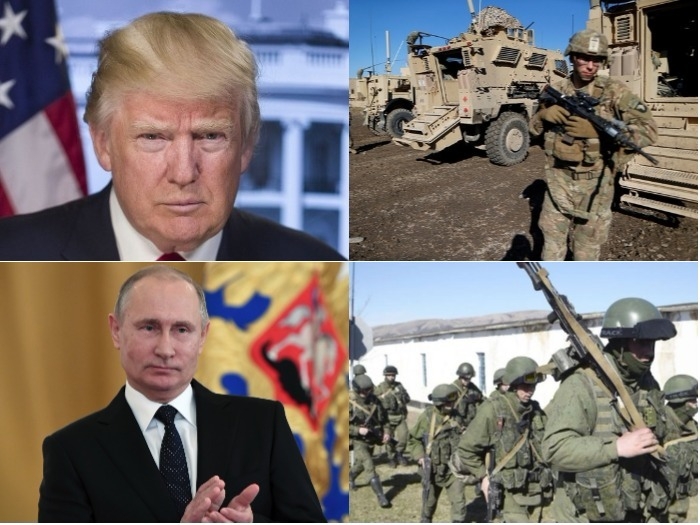
Dictatorships in Arab
The initial support from the global powers for their own benefits, the ambitious and bloody nature of Arab monarchies and their wish to prevent democracy and popular uprising in their own kingdoms, and the presence of petrodollars, are all the main causes of so much of terrorism in the middle east. But how did these many such kingdoms of similar ideologies manage to form in the Arab world?
It all began after World War I, when the Ottoman Empire, an empire ruling over all of the Arab lands (at-least somewhat in a better way), fell to the British. Palestine was taken away and colonies were created there. Thus the structure of Israel was made and then filled up after the second world war. The Britishers also supported the ruthless tribe leaders in the central desert of Najran (today's Saudi Arabia) to fight against the Ottomans and their allies. Using the terrorizing tribes, still under the influence of ‘Wahabi preacher: Ibn Al Wahhab of the 17th century’, the nomadic tribes of Najran formed present Saudi Arabia, named after their forefathers. These fighter tribes under the new, modified, radicalized Islam were allowed to form religious/ sharia police in the new country, and the backbone of future ISIS, Al-Qaeda, and all the likes was thereby formed. (6)
Similar scenarios were seen in countries like Qatar, U.A.E. and Bahrain. To add, coups to allow dictators to come into power in some countries like Iraq took place, thereby guaranteeing the flow of oil without its much sharing with the local masses, and the likes of Saddam filled the scene.
And slowly and slowly, terrorism in middle east grew from some small hidden factions from the deserts of the 18th century, Saudi Arabia, to such a huge, savagely, heinous group, killing and massacring millions, and damaging the whole region and its residents: their present & future, and their faith and humanity.
Civil War in Middle East countries
- Israeli War of Independence (1948-1949)--Upon Israel's declaration of independence, Egypt, Transjordan, Syria, Iraq, Lebanon, and Saudi Arabia join the local Palestinian militias in attacking Israel.
- Suez War (1956)-Israel, France, and Britain invade Egypt. U.S. and Soviet pressure force a cease-fire and allied withdrawal from Egyptian territory.
- Iraqi Army Revolt/Coup- (July 14, 1958)--Brigadier General Abdul Karim el Qassim overthrows the royal government of King Faisal II. Both the king and Prime Minister Nouri al Said are killed. Qassim soon withdrew Iraq from the pro-Western Baghdad Pact and established friendly relations with the Soviet Union.
- Lebanese Civil War (1975-1990)-When the PLO moved to Lebanon, it helped upset the balance between the Christian and Muslim communities in Lebanon. When civil war broke out, the PLO sided with the several Muslim militias, and Israel aided the Christians. Syria sent troops as part of an Arab League force to stop the fighting. Syrian forces finally withdrew from Lebanon in April of 2005.
- Egyptian-Libyan Border War (June 21-24, 1977)-Border conflict between Egypt and Libya.
- Intra-Iraqi Kurdish warfare (1978-1979) --In 1975, Jalal Talabani formed the Patriotic Union of Kurdistan (PUK)-urban-based and leftist) in opposition the Barzani-led Kurdish Democratic Party (KDP).
- Iraqi Shia unrest in Karbala -(February 1979)--Suppressed by the Saddam regime. Under Saddam Hussein, the Shiites (Shia) were a persecuted religious group, both despite the fact and because of, their numerical majority in the country.
- Yemeni War (1979)--A border war between Saudi-allied North Yemen and Soviet-allied South Yemen turned into a superpower confrontation as Saudi Arabia's ally, the United States, sought to end a war which quickly favoured the Marxist South Yemenis. Both sides agreed to a cease-fire.
- First Persian Gulf War (1980-1988)-Iran vs. Iraq-also involved U.S. and Kuwait.
- "The Tanker War" (1987-1988)-This is the component of the First Persian Gulf War that involved the U.S. and Kuwait. In an attempt to halt Kuwaiti aid for Iraq, as well as Iraqi oil sales and deliveries, Iran attacked oil tankers in the Gulf. The U.S. stepped in to protect the Kuwaiti ships and came engaged in combat with Iran's Navy and Revolutionary Guards. Also known by the U.S. code-name "Operation Earnest Will."
- Osiraq Reactor Raid—(June 7, 1981) –Israeli warplanes bombed the Osiraq nuclear reactor under construction in Iraq.
- Israeli Invasion of Lebanon (1982-1984)-Also involved Syria and the PLO.
- Israeli-Lebanese Border War (1984-2000)-Also involved Syria, the PLO and Lebanese militias such as Hezbollah.
- South Yemen Civil War (1986)--Civil War in Marxist South Yemen between different factions in the ruling Marxist government. More than 10,000 died in a week of fighting.
- The First Intifada (Dec. 1987-1993)-An uprising by the Palestinians in the territories occupied by Israel in the 1967 War. This conflict concluded with the Oslo Accords, which set up a timetable for Palestinian nationhood and called for the establishment of the Palestinian Authority, with PLO Chairman Yassir Arafat as President.
- Second Persian Gulf War (1990-1991) Kuwait, United States, Saudi Arabia, Syria, Egypt, Britain, France, Oman, Qatar, UAE vs. Iraq
- Iraqi Kurdish Revolt—(1991) –Encouraged by the sudden defeat of Saddam’s forces in Kuwait and spurred by appeals by President George H. W. Bush of the U.S., Kurds rose up against the Iraqi government with the bulk of his elite forces having escaped from the fighting in Kuwait and southern Iraq, Saddam was able to smash the revolt, causing hundreds of thousands of Kurdish refugees to flee into neighboring Turkey and Iran to escape.
- Iraqi Shiite Revolt—(1991) – Encouraged by the stunning defeat of Saddam’s forces in Kuwait and spurred by appeals by President George H. W. Bush of the U.S., the Shiites of southern Iraq rose up against the Iraqi government, only to be crushed by Saddam’s forces. Sporadic guerrilla resistance continued, with the bulk of the Shiite fighting forces seeking refuge in neighbouring Shiite Iran.
- The "No-Fly Zone War " (1991-2003)
- Yemeni Civil War (1994)
- Yemen-Eritrea Border Conflict (1996?)
- Intra-Iraqi Kurdish warfare --(1996) – Combat between various Kurdish militias.
- Yemeni Tribal Uprising (1998)
- Saudi-Yemen Border Conflict (1998)
- bin Laden's War (1998-Present) - the Terrorist conflict between the United States and irregular forces led by Osama bin Laden. The violence has also involved Kenya, Tanzania, Sudan, Yemen and Afghanistan.
- The Second Intifada (Sept. 2000-Present)-An urban guerrilla/terrorist conflict between the Palestinians and Israel. Marked by suicide bombings, recurring Israeli invasions of Palestinian cities and Palestinian guerrilla attacks on Israeli settlements and military targets.
- Third Persian Gulf War (2003-2011)-The second major war between the United States-led coalition and the Middle Eastern nation of Iraq. Military members of the initial invasion coalition also include the United Kingdom, Poland, and Australia.
- Sa'dah Insurgency (June, 2004-Present)-A rebellion by the Shiite Zaidiyyah sect in northern Yemen against the government of Yemen.
- Saudi-Yemen War (2009)--Saudi Arabia intervened in the Sa'dah War in Yemen.
- Israeli Invasion of Lebanon (2006)
- North Lebanon Conflict (May 20, 2007- September 2, 2007)--This conflict began in May 2007, when the Lebanese Army began a siege of the Nahr al-Bared refugee camp in order to drive out a militant Islamic militia called Fatah Islam.
- Gaza War (2008-2009)--Israel invades Hamas-ruled Gaza in an attempt to stop frequent missile attacks on Israel by Hamas.
- Egyptian Revolution of 2011
- Libyan War of 2011
- Syrian Civil War (2011-Present)
- Islamic State War (2014-Present)-Includes conflict and war involving ISIS/ISIL/The Islamic State in Iraq, Syria, Yemen, Libya, and elsewhere.
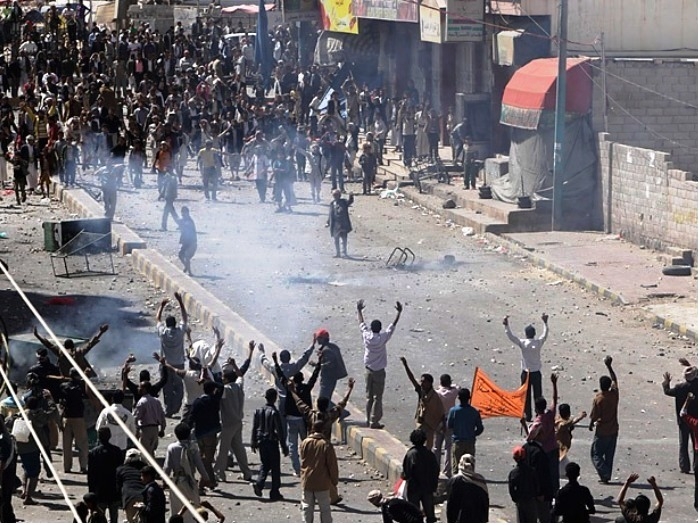
The establishment of the state of Israel in 1948, which gave rise to the still-unresolved Palestine problem, and Israel’s occupation of the West Bank, which many believe may lead to an apartheid state. I believe the Israeli-Palestinian conflict is the root cause of all the problems in that region.
Western powers’ support for corrupt, dictatorial secular regimes, paving the way for Islamist groups as the only alternative available to the people.
The creation of the Afghan mujahedeen by the United States and its regional allies, namely Pakistan, Saudi Arabia, Qatar and others, to fight the Soviet Union in Afghanistan, which, after the Cold War, gave rise to al-Qaeda and the Taliban. The creators are now harvesting the fruits of their efforts.
The invasion of Afghanistan and Iraq by the United States, the intervention of the U.S. and NATO in Libya, and Western powers’ financial and military backing of the Syrian opposition, which transformed a struggle between democratic groups and the secular dictatorship of President Bashar al-Assad into a sectarian war against democracy and development.
The existence of different interpretations of Islamic teachings. Some consider the Quran to be a manifesto for peace, while others interpret it as an order for war, making God the eternally bloodthirsty commander-in-chief of an eternal war. The United Nations has reported that a number of civilians and military personnel have been executed by ISIS.
Human Rights Watch has expressed concerned over war crimes committed by ISIS. Both the UN and HRW have repeatedly declared that Islamist terrorists have committed war crimes in Syria. Another report indicates that 1,700 civilians have been murdered by ISIS, that an Iraqi officer has been beheaded, and that ISIS has bragged about using the head as a “soccer ball.”
The transformation of the Arab Spring into a sectarian war between Shiites and Sunnis by dictatorial regimes such as Saudi Arabia and Bahrain in order to escape the establishment of democratic regimes and respect for human rights in those nations.
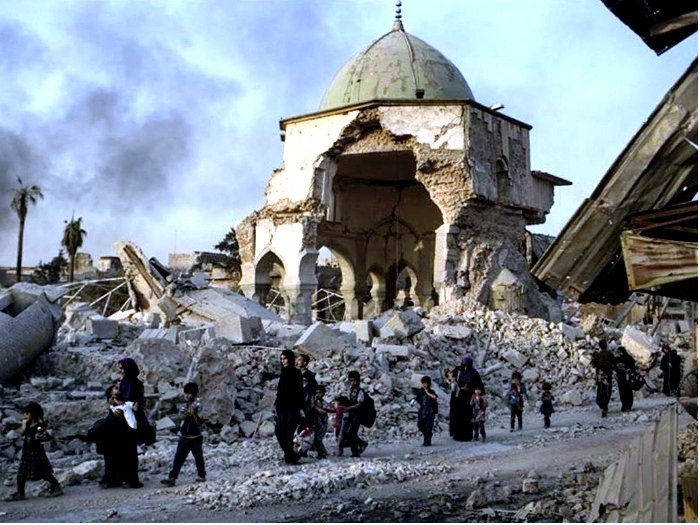
Sunni powerhouse Saudi Arabia and Iran, the predominant Shiite power, have a long-standing rivalry based as much on geostrategic interests as religious differences. Facing off across the Gulf, the two energy-rich powers have for decades stood on opposing sides of conflicts in the Middle East.
The Iranian revolution of 1979 and the advent of the Islamic Republic — with its fiercely anti-American slant — were perceived as a double threat to the conservative Sunni monarchies of the Arabian Peninsula, allied with the United States.
Saudi Arabia was a key financial backer of Iraqi dictator Saddam Hussein during his 1980-1988 war with Iran. With Iraq weakened following the 1991 Gulf War, Saudi Arabia and Iran became "the two main regional powers," said Clement Therme, a researcher at the International Institute for Strategic Studies.
In the past 15 years, in particular, the differences between Saudi Arabia and Iran have been sharpened by a series of events. The 2003 US-led invasion of Iraq overthrew Saddam Hussein, a Sunni Arab who had been a major Iranian adversary. This removed a crucial military counter-weight to Iranian influence in Iraq, which has been rising since then.
In 2011, the Arab world engaged in political instability. Iran and Saudi Arabia exploited these upheavals to expand their influence, notably in Syria, Bahrain and Yemen, further heightening mutual suspicions. Iran's critics say it is intent on establishing itself or its proxies across the region, and achieve control of a land corridor stretching from Iran to the Mediterranean.
The strategic rivalry is heating up because Iran is in many ways winning the regional struggle. In Syria, Iranian (and Russian) support for President Bashar al-Assad has largely routed rebel group groups backed by Saudi Arabia. Saudi Arabia is trying desperately to contain rising Iranian influence and the militaristic adventurism of the kingdom's young and impulsive Crown Prince Mohammed bin Salman - the country's de facto ruler - is exacerbating regional tensions.
Crown Prince Mohammed bin Salman is waging a war against rebels in Saudi Arabia's southern neighbour, Yemen, in part to stem perceived Iranian influence there, but after nearly three years this is proving a costly gamble.
Meanwhile, in Lebanon, many observers believe the Saudis put pressure on the prime minister to resign in order to destabilize a country where Iran's ally, Shia militia group Hezbollah, leads a politically powerful bloc and controls a huge, heavily armed fighting force. There are also external forces at play. Saudi Arabia has been emboldened by support from the Trump administration while Israel, which sees Iran as a mortal threat, is in a sense "backing" the Saudi effort to contain Iran.
The Jewish state is fearful of the encroachment of pro-Iranian fighters in Syria ever closer to its border. Israel and Saudi Arabia were the two countries most resolutely opposed to the 2015 international agreement limiting Iran's nuclear programme, insisting that it did not go far enough to roll back any chance of Iran obtaining the bomb.
In the pro-Saudi camp are the other major Sunni actors in the Gulf - the UAE, Kuwait and Bahrain, as well as Egypt and Jordan. In the Iranian camp is Syria's government, which has been strongly backed by Iran, and where pro-Iranian Shia militia groups, including the Lebanon-based Hezbollah, have played a prominent role in fighting predominantly Sunni rebel groups.The Shia-dominated Iraqi government is also a close ally of Iran, though paradoxically it also retains a close relationship with Washington on whom it has depended for help in the struggle against so-called Islamic State.
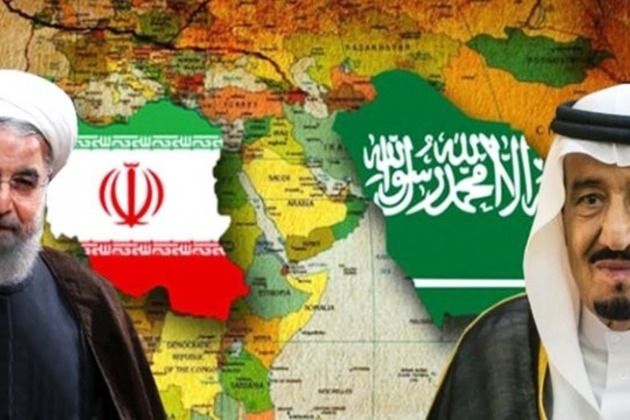
Conclusion
To earn more and more power and in a contest to get more powerful than others, few countries in the Middle East have kept humanity at the stake. Civilians are the one who is facing worst situations due to a power struggle. Few countries are acting violently, supporting terrorism, civil war, political disability in the whole region.
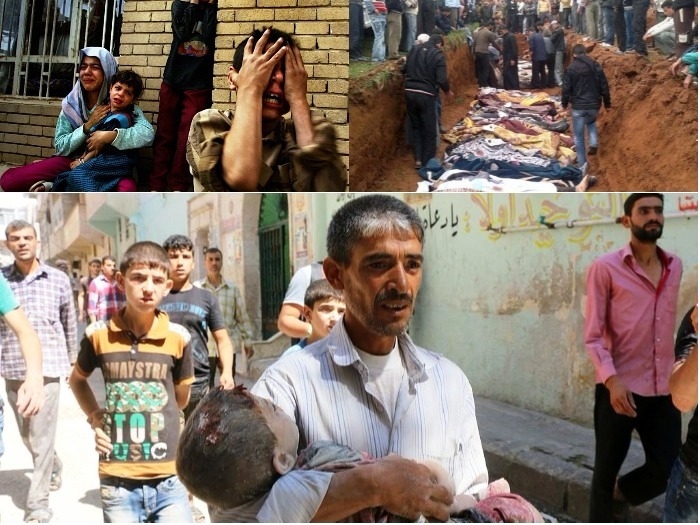
However, there is no exact data of civilians killed in the Middle East. But in estimation and figures in record say that at least one million civilians through the Middle East are killed every year due to violent conflicts.
The past and present of the whole Middle East are been under the shadow of dark red colour as thousands of people including civilians, armed forces and terrorists were killed and in the near future, there is no sign of situations getting better at all. If this continues for more years than the Middle East is surely on the way of massive destruction.